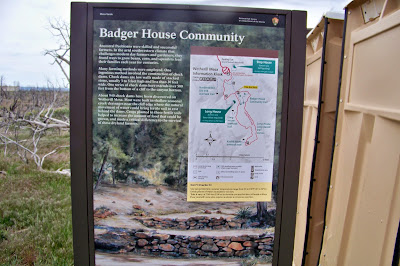The primary goal of our visit to the North Rim was to examine the North Kaibab Trail which leads down to the Cottonwood Campground then onto Phantom Ranch. The photos of the North Kaibab Trail are in the Grand Canyon - North Rim Day 2 post.
Kathy and I have hiked the South Rim Corridor Trails which are the South Kaibab Trail and Bright Angel Trail twice before. However, we have never hiked from the North Rim down to Phantom Ranch. We are exploring hiking the North Kaibab Trail down to Phantom Ranch and then taking a multiple-day rafting trip out of the Canyon. That will be for another year though. Anyone want to join us? We can then say we have hiked the Grand Canyon from Rim to Rim, just not all in one trip.
Kathy and I have hiked the South Rim Corridor Trails which are the South Kaibab Trail and Bright Angel Trail twice before. However, we have never hiked from the North Rim down to Phantom Ranch. We are exploring hiking the North Kaibab Trail down to Phantom Ranch and then taking a multiple-day rafting trip out of the Canyon. That will be for another year though. Anyone want to join us? We can then say we have hiked the Grand Canyon from Rim to Rim, just not all in one trip.
Day 1
Here we are at the entrance to the park. The entrance is some 13-14 miles from the North Rim,
We arrive at the North Rim and see our first glimpse of the canyon.
You cannot imagine how massive the canyon is until you see it in person.
Not many people leave the rim to explore the real beauty of the canyon.
You can see a couple have ventured to the edge of the rim to get a better view. Don't get too close to the edge. Its not the falling that hurts, its the landing.
Here's a view of the inside of the Grand Canyon Lodge. The lodge burned to the ground from a fire in 1932 and was replaced in 1936-1937. The views from the windows are stunning.
View from the left window. Click on any photo to enlarge.
View from the center window.
View from the right window.
Bright Angel Point. The
trail is paved over its entire 0.75 miles length. This trail follows a ridge
line at the end of the Bright Angel Peninsula to Bright Angel Point, which
offers a panoramic view of the canyon from its north side.
The small cavern in the center section of this photo is the Bright Angel Canyon.
I thought this was a great photo. I did not realize that I took the same one when we visited the North Rim back in 2008.
You can see the steep grades within the canyon walls. The North Rim sits at 8241 feet some 2000 feet higher than the South Rim.
Portions
of the Cottonwood Campground are visible from the end of this trail.
This photos shows some of the South Kaibab Trail heading down to the Colorado River.
Grand Canyon Village on the South Rim is visible about 10
miles away.
It was a very chilly day, then it started to snow so we decided enough is enough.
This photo is 13 miles away and its still snowing sideways. All in all still a great day.

































































